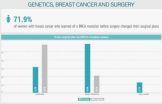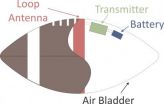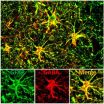(Press-News.org) Health-related buzzwords, such as "antioxidant," "gluten-free" and "whole grain," lull consumers into thinking packaged food products labeled with those words are healthier than they actually are, according to a new research study conducted by scholars at the University of Houston (UH).
That "false sense of health," as well as a failure to understand the information presented in nutrition facts panels on packaged food, may be contributing to the obesity epidemic in the United States, said Temple Northup, an assistant professor at the Jack J. Valenti School of Communication at UH.
"Saying Cherry 7-Up contains antioxidants is misleading. Food marketers are exploiting consumer desires to be healthy by marketing products as nutritious when, in fact, they're not," said Northup, principal investigator of the study, "Truth, Lies, and Packaging: How Food Marketing Creates a False Sense of Health."
The study examined the degree to which consumers link marketing terms on food packaging with good health. It found that consumers tend to view food products labeled with health-related euphemisms as healthier than those without them. The research also showed that the nutrition facts panels printed on food packaging as required by the U.S. Food and Drug Administration do little to counteract that buzzword marketing.
"Words like organic, antioxidant, natural and gluten-free imply some sort of healthy benefit," Northup said. "When people stop to think about it, there's nothing healthy about Antioxidant Cherry 7-Up – it's mostly filled with high fructose syrup or sugar. But its name is giving you this clue that there is some sort of health benefit to something that is not healthy at all."
The study also looks at the "priming" psychology behind the words to explain why certain words prompt consumers to assign a health benefit to a food product with unhealthy ingredients.
"For example, if I gave you the word 'doctor,' not only 'doctor' would be accessible in your mind – now all these other things would be accessible in your mind - 'nurse,' 'stethoscope,' etc.," Northup said. "What happens when these words become accessible, they tend to influence or bias your frame of mind and how you evaluate something."
This triggered concept is then available to influence later thoughts and behaviors, often without explicit awareness of this influence – the so-called priming effect, Northup said.
Northup developed an experiment using priming theory to gather quantitative research on how food marketers influence consumers. He developed an online survey that randomly showed images of food products that either included actual marketing words, like organic, or a Photoshop image removing any traces of those words, thereby creating two different images of the same product. A total of 318 study participants took the survey to rate how "healthy" each product was.
The products with trigger words in their labels analyzed in the study were: Annie's Bunny Fruit Snacks (Organic), Apple Sauce (Organic), Chef Boyardee Beefaroni (Whole Grain) Chef Boyardee Lasagna (Whole Grain), Chocolate Cheerios (Heart Healthy), Cherry 7-Up (Antioxidant), Smuckers Peanut Butter (All Natural) and Tostitos (All Natural).
Northup found when participants were shown the front of food packaging that included one of those trigger words, they would rate the items as healthier.
"I took a label from Cherry 7-Up Antioxidant and Photoshop it without the word 'antioxidant' and only the words, 'Cherry 7-Up.' I then asked people via the online survey which one they thought was healthier," said Northup. "Each time a participant saw one of the triggering words on a label, they would identify it as healthier than the other image without the word."
After completing the product evaluations, the study participants then reviewed the nutrition facts panels on a variety of products. These labels would be presented two at a time so the participants could choose the healthier food or drink option.
"Food marketers say there are nutritional labels, so people can find out what's healthy and what's not," he said. "Findings from this research study indicate people aren't very good at reading nutritional labels even in situations where they are choosing between salmon and Spam. Approximately 20 percent picked Spam as the healthier option over salmon," said Northup.
Northup hopes the results of this study will contribute to an increased dialogue on how food is marketed, guide development of specific media literacy and help people understand the effects of how food is marketed to consumers.
INFORMATION:
About the University of Houston
The University of Houston is a Carnegie-designated Tier One public research university recognized by The Princeton Review as one of the nation's best colleges for undergraduate education. UH serves the globally competitive Houston and Gulf Coast Region by providing world-class faculty, experiential learning and strategic industry partnerships. Located in the nation's fourth-largest city, UH serves more than 39,500 students in the most ethnically and culturally diverse region in the country. For more information about UH, visit the university's newsroom at http://www.uh.edu/news-events/.
UH research focuses on how food marketing creates a false sense of health
2014-06-13
ELSE PRESS RELEASES FROM THIS DATE:
Who's using your data?
2014-06-13
By now, most people feel comfortable conducting financial transactions on the Web. The cryptographic schemes that protect online banking and credit card purchases have proven their reliability over decades.
As more of our data moves online, a more pressing concern may be its inadvertent misuse by people authorized to access it. Every month seems to bring another story of private information accidentally leaked by governmental agencies or vendors of digital products or services.
At the same time, tighter restrictions on access could undermine the whole point of sharing ...
Moffitt study shows utilizing genetic health care professional reduces unnecessary testing
2014-06-13
TAMPA, Fla. (June 13, 2014) – A new Moffitt Cancer Center study published Thursday in Genetics in Medicine shows that counseling from a genetic health care provider before genetic testing educates patients and may help reduce unnecessary procedures.
Up to 10 percent of cancers are inherited, meaning a person was born with an abnormal gene that increases their risk for cancer. "Pre-test genetic counseling in which a health care provider takes a thorough family history and discusses the potential risks and benefits of genetic testing is standard of care as recommended ...
BRCA test results affect patients' breast cancer surgery plans
2014-06-13
PROVIDENCE, R.I. [Brown University] —Women diagnosed with breast cancer often face a crucial decision about the extent of their surgical treatment. Many meet national guidelines recommending testing for mutations in the BRCA 1 and 2 genes, which carry a substantial risk of future cancer. A new study reports that among women with breast cancer who undergo recommended testing before surgery, more than 7 in 10 who test positive will change their surgical plan, typically opting for a more extensive procedure such as a double mastectomy and sometimes ovary removal.
"As soon ...
Charity funding study brings alcohol industry influence on UK policy into question
2014-06-13
Five charities in the UK are both active in alcohol policy processes and funded by the alcohol industry, according to a new study published in the European Journal of Public Health.
The study, carried out by researchers at the London School of Hygiene & Tropical Medicine, looks at the relationships between the alcohol industry, charities and policy influence in the UK.
Two of the charities, Addaction and Mentor UK, are the only remaining non-industry, non-governmental members of the Public Health Responsibility Deal's alcohol network – the UK government's initiative ...
New membrane-synthesis pathways in bacteria discovered
2014-06-13
Biologists at the Ruhr-Universität Bochum (RUB) have discovered new mechanisms used by bacteria to manufacture lipids, i.e. fat molecules, for the cell membrane. Those mechanisms are a combination of familiar bacterial synthesis pathways and of such that occur in higher organisms. Thus, the team headed by Prof Dr Franz Narberhaus and Dr Roman Moser has debunked the long-standing theory that lipid production in bacteria differs substantially from that in higher organisms. The results have been published in the journal Molecular Microbiology.
Potential for the pharmaceutical ...
Are female hormones playing a key role in obesity epidemic?
2014-06-13
An imbalance of female sex hormones among men in Western nations may be contributing to high levels of male obesity, according to new research from the University of Adelaide.
In a paper published in the online journal PLOS ONE, researchers from the University's School of Medical Sciences suggest that obesity among Western men could be linked with exposure to substances containing the female sex hormone estrogen – substances that are more often found in affluent societies, such as soy products and plastics.
The research was conducted by University of Adelaide medical ...
Crossing the goal line: New tech tracks football in 3-D space
2014-06-13
Referees may soon have a new way of determining whether a football team has scored a touchdown or gotten a first down. Researchers from North Carolina State University and Carnegie Mellon University, in collaboration with Disney Research, have developed a system that can track a football in three-dimensional space using low-frequency magnetic fields.
The technology could be particularly useful for situations when the ball is blocked from view, such as goal-line rushing attempts when the ball carrier is often buried at the bottom of a pile of players. The technology could ...
Breakthrough for information technology using Heusler materials
2014-06-13
It is the breakthrough that physicists and chemists around the world have long anticipated and it will play a pivotal role in information technology in coming years. Researchers at Johannes Gutenberg University Mainz (JGU) have managed, for the first time, to directly observe the 100 percent spin polarization of a Heusler compound. Heusler alloys are composed of several metallic elements arranged in a lattice structure. They are among those materials that potentially can be used for ever smaller data storage components with ever greater storage capacity. However, doubts ...
Rescue of Alzheimer's memory deficit achieved by reducing 'excessive inhibition'
2014-06-13
A new drug target to fight Alzheimer's disease has been discovered by a research team led by Gong Chen, a Professor of Biology and the Verne M. Willaman Chair in Life Sciences at Penn State University. The discovery also has potential for development as a novel diagnostic tool for Alzheimer's disease, which is the most common form of dementia and one for which no cure has yet been found. A scientific paper describing the discovery will be published in Nature Communications on 13 June 2014.
Chen's research was motivated by the recent failure in clinical trials of once-promising ...
Genotyping can predict disease outcomes in rheumatoid arthritis patients
2014-06-13
New cohort studies presented today at the European League Against Rheumatism Annual Congress (EULAR 2014) have shown the amino acid valine at position 11 of HLA-DRB1 gene to be the strongest independent genetic determinant of radiological damage in rheumatoid arthritis (RA).1 In addition, positions 71 and 74 were found to represent independent predictors, with the three positions together: 11, 71 and 74 strongly associated with disease outcomes.1
According to lead author Dr Sebastien Viatte of the Arthritis Research UK Centre for Genetics and Genomics, Manchester, United ...



